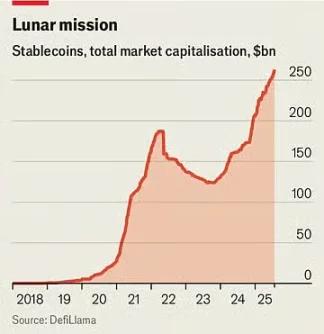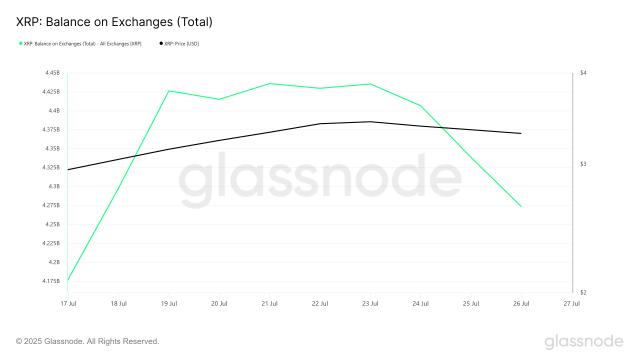Author: Jay Jo
Source: Tiger Research
Translated by: Blockchain Plain Language

Coinbase is evolving from a simple trading platform to building a comprehensive cryptocurrency ecosystem through Base chain and The Base App.
The company is expanding its influence in the cryptocurrency industry by acquiring multiple crypto startups and leveraging a strong Coinbase alumni network, similar to Google's approach.
Coinbase's strategic moves clearly help promote cryptocurrency adoption. However, they also create new centralized structures and pose challenges in balancing decentralization values.
1. Coinbase: Ambitions Beyond a Trading Platform
Coinbase became the first cryptocurrency trading platform to be listed on a securities exchange in April 2021, going public on NASDAQ through a direct listing. This event was not just an IPO for a single company, but symbolized a turning point for the cryptocurrency industry's entry into the mainstream financial system.
The company name "Coinbase" is also symbolic, derived from Bitcoin's "Coinbase Transaction", which is the first transaction recorded when creating a new block, representing the moment cryptocurrency enters the world. The company name reflects its firm commitment to becoming the starting point of the cryptocurrency ecosystem.
Coinbase's symbolism is not limited to its naming. Building on its core trading platform business, the company has expanded its scope to construct a massive ecosystem. The company launched Base, an Ethereum-based Layer 2 chain, and introduced The Base App (TBA) during the "A New Day One" event. These developments indicate that Coinbase is building a comprehensive cryptocurrency ecosystem from infrastructure to applications.
2. Crypto Full Stack: Trading Platform, Infrastructure, and Consumer Applications
2.1. Trading Platform: Coinbase's Reliable Cash Cow
Coinbase's core business is undoubtedly its trading platform, providing cryptocurrency trading services for users ranging from individuals to institutions and generating revenue through trading fees. As of 2024, trading fee income accounts for about 60% of total revenue, approximately $4 billion. The relatively stable trading fee income lays the foundation for Coinbase's new business expansion, similar to how Amazon expanded multiple businesses based on AWS as its cash cow.

Source: Coinbase
Moreover, the trading platform's value is reflected in its strategic scalability. As the core gateway connecting fiat and cryptocurrency, the trading platform provides Coinbase with a massive user base and trading data. This position makes it a natural strategic hub for attracting users into a broader ecosystem. The trading platform provides Coinbase with financial stability and strategic expansion capabilities, serving as the core foundation for ecosystem development.
2.2. Base Chain: Crossing from Off-Chain to On-Chain
Base chain is an Ethereum-based Layer 2 blockchain directly built by Coinbase. Through this chain, Coinbase has expanded from trading platform business to the on-chain domain.

Source: Base
This expansion is necessary due to the structural characteristics of the cryptocurrency ecosystem. The cryptocurrency ecosystem is divided into off-chain and on-chain environments. Trading platforms primarily provide transaction services between fiat and cryptocurrency in the off-chain environment.
However, actual cryptocurrency applications occur in the on-chain environment outside the chain, such as crypto-based collateralized loans and governance participation. For example, users who buy cryptocurrency on Coinbase transfer it to the chain to participate in specific DeFi protocols. This means Coinbase faced structural limitations, needing to send users to other ecosystems.
The Base chain resolves these limitations. Now, even when users buy and withdraw cryptocurrency on Coinbase, they can remain within Coinbase's ecosystem. Just as Apple controls hardware and software, Coinbase can now manage the entire user journey from trading platform to infrastructure, which is significant.
2.3. TBA: Completing the Final Piece of the Crypto Ecosystem

In July 2025, Coinbase announced the launch of TBA, an on-chain super app, moving towards a larger vision. Its strategy is not limited to locking in users through the trading platform but also providing an actually usable application layer through Base infrastructure. Although many decentralized applications (dApps) are based on Base, they are scattered and difficult to find in one place. Even if the Base chain performs excellently or has low fees, its significance is hard to demonstrate if ordinary users cannot easily access it.

Source: Base
TBA integrates the core elements of the cryptocurrency ecosystem—trading platform, infrastructure, and applications—into one platform, providing a seamless user experience. Users can make cryptocurrency payments and transfers, generate income through Farcaster-based social services, and immediately use it for online or offline payments, bringing a completely new on-chain experience. Multiple services work synergistically, creating a powerful synergy and building a vast on-chain economic ecosystem. This significantly lowers the barrier to participating in the on-chain economy, completing the final piece of Coinbase's massive ecosystem construction.
3. Coinbase Building a Crypto Empire
Coinbase is no longer just a trading platform. The company has built blockchain infrastructure and consumer applications on top of its trading platform, evolving into a massive empire covering the entire cryptocurrency ecosystem. Additionally, through an aggressive acquisition strategy, Coinbase has further expanded into broader areas. For example, the company has acquired Token management platform LiquiFi, zero-knowledge proof technology company Iron Fish, Web3 advertising platform Spindl, and crypto derivatives trading platform Deribit, extending its tentacles into various fields of the Web3 industry.

Source: Tiger Research
These actions indicate that Coinbase is trying to control all cryptocurrency-related touchpoints like an aircraft carrier. Moreover, its relationship with Circle, the USDC stablecoin issuer, is particularly noteworthy. Coinbase is a major shareholder of Circle, receiving a portion of USDC interest income, going beyond a simple equity investment. If Circle goes bankrupt or fails to fulfill income distribution obligations, some USDC-related rights will transfer to Coinbase. This shows that Coinbase almost controls the core infrastructure of the cryptocurrency ecosystem.

Source: Coinbase Ventures
Coinbase's expansion strategy is not only achieved through acquisitions. Another core strategy is spreading influence in the cryptocurrency industry through Coinbase alumni, similar to the PayPal Mafia's operation mode. The company has invested in and established collaborations with over 40 Web3 startups founded by former Coinbase employees, continuously building a close collaborative network. Notable cases include Polychain Capital founded by Coinbase's first employee Olaf Carlson-Wee, and major Web3 projects like dYdX, Farcaster, Zora, and B3 created by Coinbase alumni.
We still view Coinbase as a trading platform, but its actual operation is more like Google in the Web2 era. Just as Google started with search and dominated the entire digital ecosystem including advertising, cloud, and mobile, Coinbase is building a massive empire covering all areas of the cryptocurrency ecosystem from its trading platform business.
4. A Trading Platform-Centered Crypto Market: Good or Bad?
Coinbase is building a massive empire. Its strategic moves from the trading platform to Base chain and then to TBA are clearly well-thought-out. However, we need to consider its positioning in these aggressive strategies.
Cryptocurrency advocates decentralization, but now it is returning to centralization while pursuing convenience. Users voluntarily enter the Coinbase ecosystem and have no reason to leave. This essentially reshapes structures similar to traditional finance.
This change is not entirely negative. Integrated platforms like TBA bring actual benefits to users. Users can access all services in a single app without complex wallet connections, frequent platform switching, or worrying about high gas fees, from generating income through social activities to actual payments. Coinbase's model clearly helps cryptocurrency adoption.
However, we cannot ignore a key point. Cryptocurrency aims to achieve decentralization, but today it has formed new centralized structures while pursuing convenience. Users voluntarily stay within the Coinbase ecosystem, finding no reason to leave. This is essentially no different from the traditional centralized financial structures we are trying to escape.
The market has chosen convenience, and reversing this trend seems difficult. Now, the important thing is to find a balance between centralized convenience and decentralized spirit. The real challenge is to build an ecosystem that protects user choice through healthy competition and continuous innovation while preserving the core values of cryptocurrency.
Article link: https://www.hellobtc.com/kp/du/07/5988.html
Source: https://reports.tiger-research.com/p/coinbase-tba-eng






